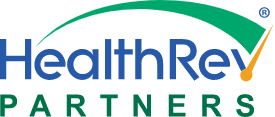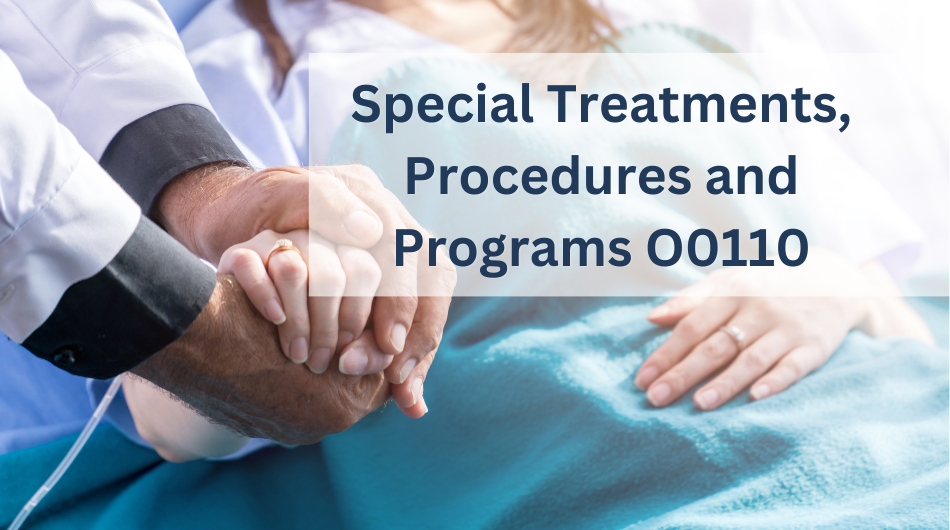The purpose of Section O in the new OASIS E data set is to identify ALL special treatments, procedures, and programs that are part of a patient’s current plan of care at Start of Care, Resumption, and Discharge timepoints. Learn more about authoring the best plan of care in a podcast, HERE. Special Treatments can have a significant impact on a patient’s health status, dignity, and overall quality of life.
Looking to outsource your documentation review?
Schedule a time to learn more about our services.
The documentation in this item includes treatments, programs, and procedures performed by others as well as those performed by the patient, once setup is completed by the home health agency or a caregiver. This list encompasses what is performed in the patient’s home or in other healthcare settings such as a dialysis center. Excluded from this list are services provided solely in conjunction with a surgical/diagnostic procedure, such as IV medications. Surgical procedures include any pre and post op routine procedures.
There are several treatments, procedures and programs referenced throughout the OASIS-E assessment. When completing OASIS E Section O, clinicians are going to need to be sure to cross-reference this list to other OASIS items as well as the plan of care. This section will rely heavily on collaboration to ensure accuracy. Information can be gathered from clinical records, and clarified through consultation with the patient, family, or caregiver. There are 3 major sections and a “none of the above” option for Section O. We’ll look at each of these 3 major sections below: Cancer Treatments, Respiratory Treatments, and Other.
Cancer Treatments
Chemotherapy and Radiation should ONLY be checked if the patient is under treatment at time of the assessment.
A1-Chemotherapy
If a patient is undergoing chemotherapy, then A1 would be checked along with the type/types of chemotherapy that is being received in A2, A3, or A10 explained below.
A2 IV Chemotherapy
Includes any chemotherapy administered via IV, such as Abraxane, Doxil, and Cytoxan
A3 Oral Chemotherapy
Can include pills, capsules, or liquid the patient swallows or is administered enterally via feeding tube/PEG, such as Cytoxan, Xeloda, and Temodar.
A4 Other Chemotherapy
Includes any chemotherapy other than IV, oral, or enteral. Can include intramuscular, interventricular/intrathecal, intraperitoneal, or topical such as methotrexate and Efudex.
B1 Radiation
Radiation includes intermittent high doses of radiation to kill cancer cells and shrink tumors. This can be delivered via radiation transmission machines, or can include radiation implant items such as pellets, seeds, ribbons, wires, capsules, or balloons.
Respiratory Therapies
Respiratory therapy involves various treatments that help those with short term problems or chronic lung diseases to breathe and improve their quality of life. On the OASIS E, respiratory therapies are broken down into four types including supplemental Oxygen, suctioning, tracheostomy care, and mechanical ventilation, which are described in more detail below.
C1 Oxygen therapy
Oxygen therapy is administered to increase the levels of O2 in the blood when patients are unable to get sufficient amounts from simply breathing. Oxygen therapy is categorized in the 3 following ways: Continuous, Intermittent, and High-Concentration. If a patient is dependent on supplemental O2, C1 along with the type of O2 in C2, C3 or C4 would need to be checked on the OASIS E Item O0110.
C2 Continuous-when the patient uses supplemental O2 continuously for 14 or more hours daily.
C3 Intermittent– when the patient uses supplemental O2 continuously for less than 14 hours daily.
C4 High Concentration– when the patient’s O2 delivery exceeds FiO2 (fraction of inspired oxygen) of 40%. This is typically a patient that exceeds 4 LPM (liters per minute).
Delivery of O2 can include high/low flow systems such as a simple face mask, partial/non-rebreather mask, face tents, venturi mask, aerosol mask, high-flow nasal cannula or mask. O2 can also be delivered via invasive/non-invasive mechanical ventilators, trach masks, and conserving nasal cannula systems with reservoirs including mustaches and pendants.
D1 Suctioning
Suctioning can be done by the patient or a caregiver, and only includes tracheal or nasopharyngeal, NOT ORAL suctioning. A patient could have D2 scheduled suctioning to be done at specific intervals, or D3 PRN suctioning to be performed when the patient has prominent secretions, gurgling, choking, or sudden O2 desaturation due to a mucus plug. If a patient has suctioning ordered, then D1 along with either D2, D3, or both D2 and D3 would need to be checked on the OASIS E.
E1 Tracheostomy Care
Tracheostomy care includes cleansing of the trach and/or cannula and needs to be checked on Item O0110 regardless if performed by the patient independently, or if assistance is needed.
F1 Invasive Mechanical Ventilator
Invasive Mechanical Ventilation can be a Ventilator or Respirator, and includes any type of electrically or pneumatically powered closed-system mechanical ventilator support device is used that ensures adequate ventilation in the patient who is or who may become (such as during weaning attempts) unable to support their own respiration.
G1 Non-Invasive Mechanical Ventilator
Non-Invasive Mechanical Ventilators include G2 BiPap or G3 CPAP, which prevents airways from closing by delivering slightly pressurized air through a mask or other device continuously or via electronic cycling throughout the breathing cycle. If a patient has prescribed non-invasive mechanical ventilation, then G1 along with the type of NIMV would need to be checked on the OASIS.
Other special treatments, procedures, and programs
A third category is included in O0110 to capture documentation regarding IV medications, transfusions, dialysis, and IV access that are part of a patient’s current plan of care. Even if these treatments are not carried out in the home or under the supervision of the home health agency, it is important to check H1 and ALL that apply at the time of assessment.
H1 IV Medications
Not all IV medications are included on Item O0110 H1. To better explain, refer to the table below of what is and what isn’t included on this item.
|
Includes |
DOES NOT Include |
|---|---|
|
|
In addition to checking that a patient is taking an IV medication, the clinician must also check which classification each IV medication falls under. These include:
H2 Vasoactive– includes drugs such as Norepinephrine, Phenylephrine, Vasopressin, and Epinephrine
H3 Antibiotic– includes drugs such as Levaquin and Vancomycin.
H4 Anticoagulant– includes drugs such as Coumadin, but DOES NOT include subQ injectable anticoagulants such as Lovenox.
H10 Other– includes any IV medication that does not classify under H2, H3, or H4 above, such as IV analgesics (e.g., morphine) and IV diuretics (e.g., furosemide).
I1 Transfusions
Transfusions include the administration of any blood/blood products, except those administered during Chemo or Dialysis
J1 Dialysis
Dialysis should be documented regardless of whether it occurs at home, at a facility, or if the patient performs their own dialysis. Dialysis includes 2 categories: J2 Hemodialysis and J3 Peritoneal Dialysis. Clinicians would need to check J1 if a patient is on dialysis along with J2 or J3 to document the type of dialysis.
J2 Hemodialysis is when a patient’s blood is circulated directly through a dialysis machine that uses special filters to remove waste products and excess fluid from the blood.
J3 Peritoneal Dialysis is when Dialysate is infused into the peritoneal cavity and the peritoneum (the membrane that surrounds many of the internal organs of the abdominal cavity) and serves as a filter to remove the waste products and excess fluid from the blood.
O1 IV Access
IV access is when a catheter is inserted in vein to accomplish:
- Long term medication administration
- Hemodialysis, blood product administration
- Frequent blood draws or measurement of central venous pressure
- IV fluids or TPN
There are 3 different types of IV access:
O2 Peripheral-Access in peripheral vein that stays peripheral
O3 Midline-Inserted antecubital (upper arm) and do not reach all the way to the central vein such as the superior vena cava
O4 Central– IV access that is centrally located such as a peripherally inserted central catheter (PICC), tunneled, or port.
When is the “None of the Above” response used?
If the patient does not have any special treatments, procedures, or programs present at time of assessment, then NA is the appropriate response.
DASH is also an acceptable response, but should rarely be used. Additional time may be necessary to investigate what treatments a patient may be receiving due to the impact that these special procedures and programs can have on a patient’s outcome.
Need additional trainings? Check out available courses, HERE.


